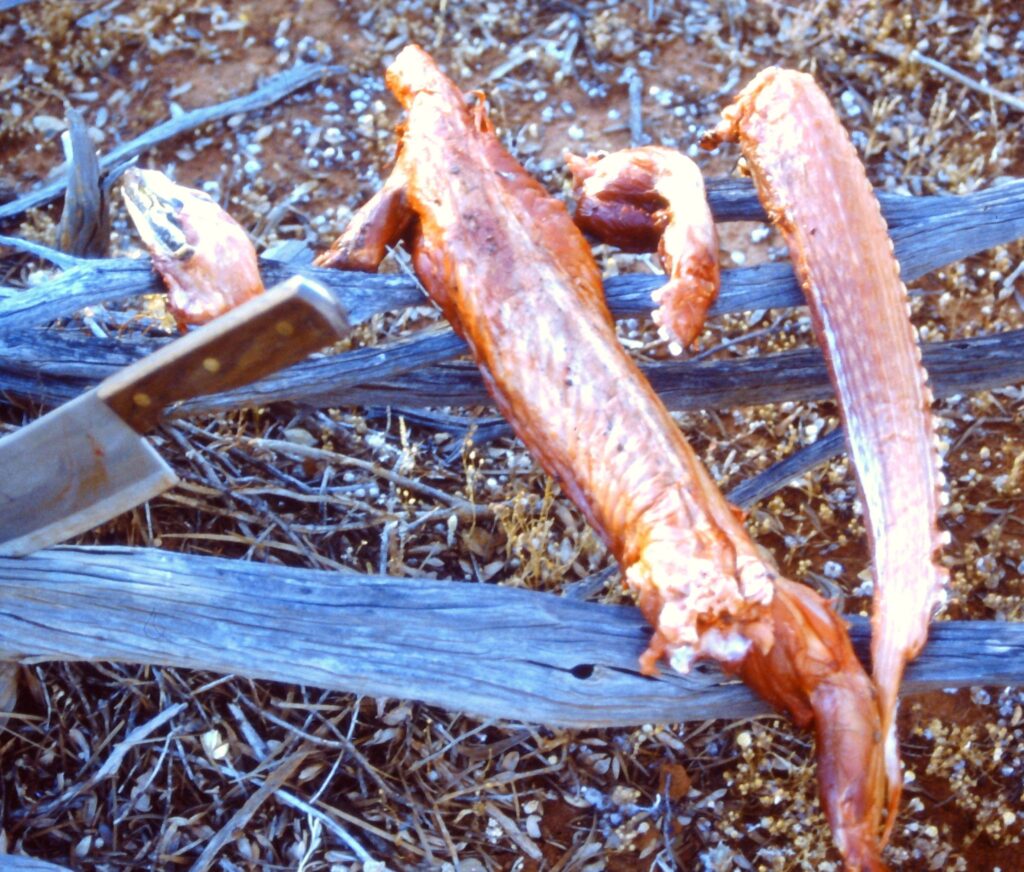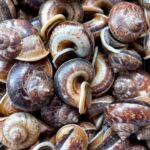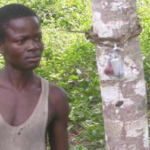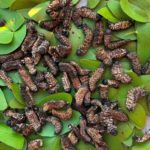In the former article, I described seeing a majestic sand monitor lizard close by on my drive from Menzies to Sandstone on a side road. Driving further on, I was surprised to see many more Goannas left and right on the track. This was the densest Goanna population I had ever seen. Presumably, the local farmers heavily thinned out the Dingo population, and Goannas thrived.
Road killed Goanna

Driving further on, a dead Sand monitor lizard was lying sideward on the track. It was still freshly killed and most likely run over by the truck I met before. Goannas are a protected species in Western Australia; only indigenous people can hunt them for food. But this one was already dead and still good to eat. I decided that under such circumstances, it was ethically OK to try it once in a lifetime and for educational purposes to cook this specimen. I, therefore, took it, looked for a place in the bush to light a fire safely, and rolled up my sleeping bag for an overnight stay.
Baking Goanna in the Ashes

Gutting and skinning the Goanna was easy, and it was done like any other four-legged animal. I scraped and salted the skin, including claws (I had enough salt), rolled it up, and put it into a newspaper. Both hind legs and the tail came first for baking in the ashes, followed by the rest of the carcass. The guts and the head were not eaten but dug into a hole and covered properly.
Taste of Goanna meat
The smell, taste, and texture of hind legs and other carcass parts are not much to comment on. It was a good BBQ smell. And how did it taste? I don’t know, but anyway, it was good. The texture was like regular long-grained meat at the legs and otherwise indistinctive.

What was interesting was the tail meat. It consisted of two completely different parts. The two inner strings along the spine were whitish-yellowish fat. The surrounding meat layer was distinctive red, oily meat in long muscle strings. The smell after roasting again was like a Gourmet BBQ. The inner and outer meat strings taste like oily snake meat, and the texture is long-grained.
The only setback was that it was too much for one person to eat. It’s very filling, and that’s a family meal for the evening. But otherwise, it was delicious meat, and in the end, I was happy not to let this animal spoil alongside the road.
Nevertheless, the educational purpose was fulfilled, and it was the first and last time that I ate a Goanna—even if it was roadkilled—just for principal conservational reasons and to avoid violating the law.
Lessons learned by eating a Goanna
- All meaty parts of a Goanna are excellent to eat, except the head.
- The head should be discarded due to the venomous glands in each jaw.
- Meat must be roasted adequately at a minimum temperature of over 70 degrees C, ideally even within the bones.
.




